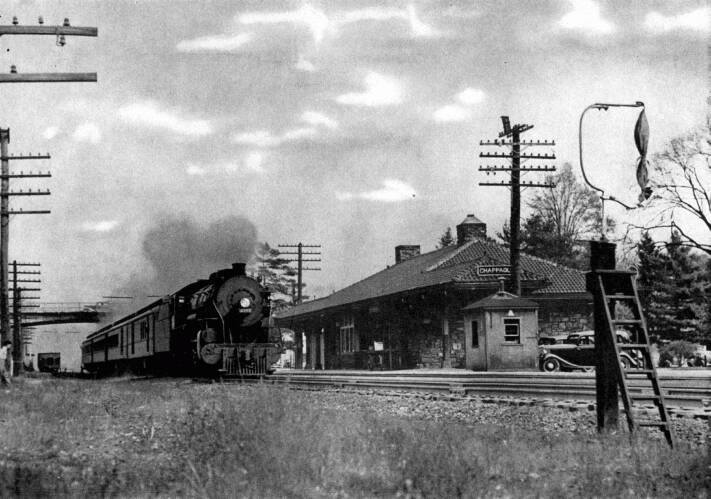 How the Train Catches a Mail Bag
How the Train Catches a Mail Bag
The postman brings the mail to our door once or twice each
day, and we drop the letters which we write into the nearest mail
box or into the local post office. How many of us have ever paused
to consider what a vast amount of work is involved and how mach
planning is necessary to collect, distribute and deliver the mails
throughout the United States? Those who have an opportunity to
look "behind the scenes" and see how the mail is handled
from the time it is collected until it is delivered, sometimes
thousands of miles away, are impressed by the important part which
the railroads play in mail transportation.
Here are a few facts:
United States mails are carried in more than 10,000 trains
daily.
These mail trains travel an aggregate distance of around 1,250,000
miles daily.
Of nearly 6,000,000,000 pounds of mail handled by the Post
Office Department each year, 5,500,000,000 pounds move by rail
during all or part of its journey.
The railroads of the United States own and operate approximately
3,800 Railway Post Office cars and apartment mail cars for the
handling of United States mails. Mail is also carried in more
than 6,400 closed-pouch cars.
United States mails are carried in some of the fastest passenger
and express trains in the country. Many of these trains run long
distances between important American cities, such as New York
and St. Louis, Chicago and San Francisco, Seattle and Los Angeles,
and Chicago and New Orleans. In order to maintain fast schedules,
these trains stop at only the larger cities en route.
However, with the aid of mail cranes such as we see in the
picture, it is possible for even the smallest communities situated
along the railroad to have adequate mail service at all times.
The mail crane enables the train to pick up a bag of mail without
stopping or slowing down. The crane is located alongside the track,
near the railway station. A mail messenger employed by the railroad
or by the local post office or some other authorized person, attaches
the mail bag to the crane a short time before the train is due.
On each side of the mail car of the approaching train is a
steel catcher arm. As the train nears the station, a clerk in
the mail car adjusts one of these catcher arms so that when it
passes the crane it catches the waiting mail bag where it is tied
in the center. The mail clerk then swings the catcher arm into
the car and drops the bag on the floor. He also throws off bags
of mail at designated stations where they are picked up by messengers
and carried to the local post offices.
More than 20,000 persons are employed in the Railway Mail Service
of the Post Office Department. Most of them are railway mail clerks
who receive, sort and distribute mail in railway post office cars.
Three or four clerks are usually assigned to each car.
The railroads transport United States mails in them own cars,
but the Post Office Department specifies the types of postal cars
or mail accommodations desired, the route of each car and the
frequency of the service. The cars must conform to certain specifications
as to size, construction and interior furnishings. Most of them
are of steel construction.
Although payments to the railroads are usually on a space basis,
records kept by the Post Office Department show that for carrying
a first-class letter on which the postage is 3 cents, the railroads
received an average of about one-fifth of 1 cent, or approximately
one-fifteenth of the postage collected by the government. Low
cost and efficient railway service makes low cost and efficient
postal service possible.
The car in Picture "Sorting Mail in a Railway Post Office
Car" is a regular Railway Post Office (R. P. O.) car. When
the amount of mail to be handled does not require a full-sized
car, a combination mail-and-baggage car or mail-and-express car
is used.
The railroads provide fast, dependable and frequent mail transportation
service to and from cities and towns in every part of the country.
Each year they transport more than 16,000,000,000 pieces of United
States mail, ranging from postal cards and letters to newspapers,
magazines, parcels and even farm products.
The importance of railway mail service is strikingly shown
by the fact that approximately 93 out of every 100 pounds of mail
matter handled by the Post Office Department moves by rail.
I've Been Working
on the Railroad | Contents Page
|







